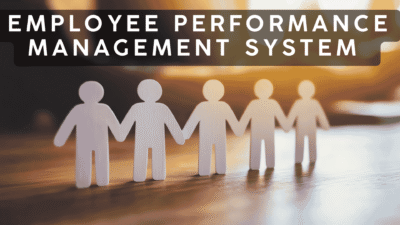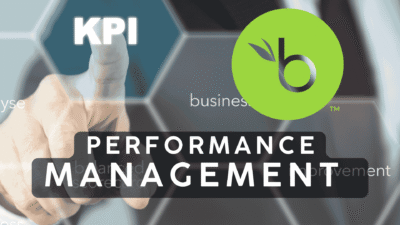A staggering 70% of change initiatives fail to achieve their goals. This isn’t a failure of technology or strategy but a failure of people management. Understanding the core Change Management Types Benefits is no longer an optional skill for advanced leaders; it is the definitive factor that separates successful initiatives from costly abandoned projects. This guide moves beyond abstract theories to provide you with a practical framework for identifying the right type of change and leveraging its benefits to ensure your projects not only succeed but thrive. Your first quick win? By the end of section two, you will be able to diagnose any change initiative in your organization and select the correct approach immediately.
1. What Does Effective Change Management Truly Involve?
Many leaders mistake change management for a series of announcements or training sessions. However, its real function is far deeper. It is the structured process of guiding individuals and teams from their current state to a desired future state with minimal disruption.
1.1. How to Define It Within Your Organization
Instead of adopting a generic definition, you should define what change management means for your team. Start by answering these questions:
- How do we typically react to new processes or tools?
- What were the primary roadblocks in our last major project?
- What resources (time, tools, personnel) can we realistically allocate to support our team during a transition?
Your answers will form the basis of a practical, customized change management charter that is built for your specific environment, not a textbook. This makes the process relevant and actionable from day one.
1.2. The Unavoidable Drivers of Organizational Change
Change is driven by a variety of factors. In today’s global market, these often include technological advancements, shifts in consumer behavior, or the need to improve operational efficiency. For example, a logistics company might need to adopt a new inventory management system to keep up with demand, or a manufacturing firm may need to re-organize its production line to reduce waste. Recognizing these drivers early allows you to be proactive rather than reactive.
2. A Practical Guide to Change Management Types Benefits
Not all changes are created equal. Using the wrong approach for a specific type of change is a primary cause of failure. Here, we break down the three core Change Management Types Benefits with a focus on how to implement each one effectively.
2.1. Developmental Change: How to Foster Continuous Improvement
This is the most common and least disruptive type of change. It involves making incremental improvements to existing processes, skills, or technologies. Think of it as refining what you already do.
How to Implement It:
- Identify the Target: Work with your team to pinpoint a specific process that is causing minor but consistent issues, such as a reporting workflow that takes too long.
- Gather Feedback: Instead of imposing a solution, facilitate a session where team members can suggest improvements. This creates immediate buy-in.
- Pilot the Change: Implement the suggested improvement with a small group or for a limited time. For example, try the new reporting workflow for one week.
- Measure and Refine: Collect data. Did the new workflow save time? Was it easier to follow? Use this feedback to make final adjustments before a full rollout.
2.2. Transitional Change: Your Step-by-Step Implementation Map
This type of change is more significant, involving the replacement of a major system or process with something entirely new. The organization is moving from a well-understood current state to a different, also well-understood, future state. A classic example is migrating from a paper-based filing system to a digital document management platform.
How to Implement It:
- Map the Future State: Clearly define what the new process will look like and what is expected of each team member. Create detailed process maps and checklists.
- Establish a Clear Timeline: Break down the transition into distinct phases with clear deadlines. Communicate this timeline widely so everyone knows what to expect and when.
- Provide Robust Training: Comprehensive training is non-negotiable. This should include hands-on practice sessions and the creation of accessible support documents. A manager, let’s call him Kenji, successfully transitioned his team to a new project management software by appointing “super-users” who received extra training and could act as go-to resources for their peers.
- Manage the “Dip”: Productivity will likely dip as the team learns the new system. Acknowledge this openly and provide support rather than pressure.
2.3. Transformational Change: How to Navigate Radical Shifts
This is the most profound and challenging type of change. It fundamentally alters the organization’s strategy, culture, mission, and leadership. Examples include a complete shift in the business model or a deep cultural overhaul to become more customer-centric. This is not about doing things better; it’s about doing completely new things.
How to Implement It:
- Secure Unwavering Leadership Commitment: Transformational change must be driven visibly and consistently from the very top of the organization. Leaders must model the desired new behaviors.
- Craft a Compelling Vision: People need a powerful reason to endure such a significant disruption. The vision must be communicated in a way that resonates on a personal level, explaining “what’s in it for us.”
- Realign Organizational Structures: Job roles, performance metrics, and reporting structures must all be redesigned to support the new vision. Failure to do so will cause the transformation to collapse under the weight of the old system.
- Celebrate Milestones: Given the long-term nature of this change, it’s crucial to identify and celebrate short-term wins. This builds momentum and reinforces the value of the new direction.
| Change Type | Scope | Level of Disruption | Primary Management Focus |
| Developmental | Improving existing skills/processes | Low | Encouraging participation and feedback |
| Transitional | Replacing old systems with new ones | Moderate | Training, project management, and support |
| Transformational | Redefining culture, mission, strategy | High | Vision, leadership, and structural realignment |
3. The Concrete Benefits: What is the Return on This Effort?
Investing in a structured approach to the Change Management Types Benefits you’ve identified yields measurable returns that go far beyond simply completing a project.
3.1. How to Directly Increase Employee Morale and Productivity
When change is managed poorly, it creates uncertainty and anxiety, causing morale and productivity to plummet. A structured approach provides clarity and support.
Actionable Step: Implement a bi-weekly “Q&A” session during any transition. A project lead, we’ll call her Fatima, did this when introducing a new quality control protocol. It gave employees a predictable forum to voice concerns and get immediate answers, preventing rumors and reducing anxiety. This simple act maintained team cohesion and focus.
3.2. Practical Strategies for Mitigating Resistance
Resistance is a natural human reaction to change, but it is often a response to the process, not the change itself. People resist being dictated to, not necessarily the new idea.
Actionable Step: Identify key influencers within your team—not necessarily managers, but respected individuals—and involve them in the planning phase. Their early adoption and advocacy will be far more effective at persuading peers than any top-down directive. This transforms potential resistance into valuable support.
3.3. How to Achieve a Higher Return on Investment (ROI)
Every new initiative, whether it’s new software or a new operational strategy, represents a significant investment. The ROI on that investment is only realized when people use the new tool or follow the new process correctly and consistently. Effective change management ensures this adoption happens faster and more completely, directly accelerating the realization of projected financial and operational gains. For example, a 15% faster adoption rate can mean achieving the project’s financial breakeven point months ahead of schedule.
Conclusion
We began with the stark reality that most change initiatives fail. That failure is rarely inevitable; it is a choice made by overlooking the human element of a transition. By moving beyond a one-size-fits-all mentality and instead mastering the different Change Management Types Benefits, you equip yourself with the precise tools needed for any situation. You learn to see change not as a disruptive event to be endured, but as a structured process to be led. The result is more than just successful projects; it is a resilient, adaptable organization ready to meet future challenges with confidence.
Frequently Asked Questions (FAQ)
- 1. What are the 3 main types of organizational change?
The three primary forms of organizational change are Developmental, Transitional, and Transformational. Developmental change involves improving existing processes. Transitional change replaces current systems with new ones, moving from a known state to another known state. Transformational change is the most radical, fundamentally altering the organization’s culture, strategy, and core operations. - 2. What is the most important benefit of effective change management?
The most critical benefit is the mitigation of employee resistance. By managing change effectively, you ensure smoother adoption of new processes, maintain morale, and sustain productivity. This directly impacts the success and return on investment of any new initiative, preventing project failure due to human factors. - 3. How do you implement change management successfully?
Successful implementation hinges on a clear, structured approach. This includes:
* Communicating the “why” behind the change clearly and consistently.
* Involving employees in the process to foster a sense of ownership.
* Providing the necessary training and resources for the new systems or processes.
* Leading with visible support from senior management.
* Monitoring progress and gathering feedback to make necessary adjustments. - 4. Can change management principles be applied to small teams?
Absolutely. While often associated with large-scale corporate projects, the core principles of Change Management Types Benefits—clear communication, support, and structured implementation—are scalable. Applying them to a small team for a minor process adjustment can prevent confusion, maintain efficiency, and build a resilient team culture.
references
Warning: The provided links lead only to the specified content. Other areas of those sites may contain material that conflicts with some beliefs or ethics. Please view only the intended page. Note: The source links are available in English only.
- Emerald Insight 2014 Author: Abrell-Vogel, C. & Rowold, J.Leaders’ Commitment to Change and Their Effectiveness in Change – A Multilevel Investigation.
Shows how leaders’ commitment and transformational leadership affect team commitment in change initiatives. - Asian Journal of Economics, Business and Accounting 2023 Author: Adiwijaya, Singgih; Ribhan; Keumala Hayati.The Effect of Transformational Leadership on Readiness for Change Mediated by Organizational Commitment.
Study on how transformational leadership increases readiness to change via organizational commitment. - PubMed / APA Journals 2008 Author: [Multiple, see full article]The Effects of Transformational and Change Leadership on Employees’ Commitment to a Change: A Multilevel Study.
Examines commitment to change as outcome under different leadership styles. - MDPI (Behavioral Sciences) 2023 Author: Multiple.Transformational Leadership and Followers’ Innovative Behavior: Roles of Commitment to Change and Organizational Support for Creativity.
Shows that commitment to change mediates between leadership style and innovation/behavior. - SAGE Journals 2023 Author: Mathewos Mekonnen & Zelalem Bayissa.The Effect of Transformational and Transactional Leadership Styles on Organizational Readiness for Change Among Health Professionals.
Shows how readiness for change is influenced by leadership styles in health sector. - Future Business Journal (SpringerOpen) 2022 Author: [Multiple].The Effect of Change Leadership on Employees’ Readiness to Change: The Mediating Role of Organizational Culture.
Discusses how culture mediates the effect of leadership on readiness to change.







